Story and photos by Anita Westervelt, Texas Master Naturalist
Beetles have lived on earth for about 300 million years. They come in all sizes and shapes; many are black; others are colorful or with spots, stripes or mottled markings.
Insects in the Coleoptera order, there are 400,000 species worldwide and some 30,000 different kinds in the United States. Most beetles can fly, although slow and lumbering. Unlike other insects, beetles cannot instantly fly. All beetles have two sets of wings; the hard shell-like body covering, called an elytra, protects the thin wings underneath that are used for flying. The elytra have to be released before the beetle can launch.
Beetles are either pests or beneficial. In turn, they are food for bats, rats, lizards, frogs, birds and spiders. Larger, predatory beetles eat smaller beetle species.
An unusual beetle seen around the Valley recently is the wild olive tortoise beetle. It is a member of the leaf beetles family and found from Corpus Christi south to Columbia. Its host plant is our native wild olive tree, Cordia boissieri, also known as Mexican olive or anacahuita. The beetle’s wild-looking black and yellow striped larvae look like they should be icons in a portable device game.
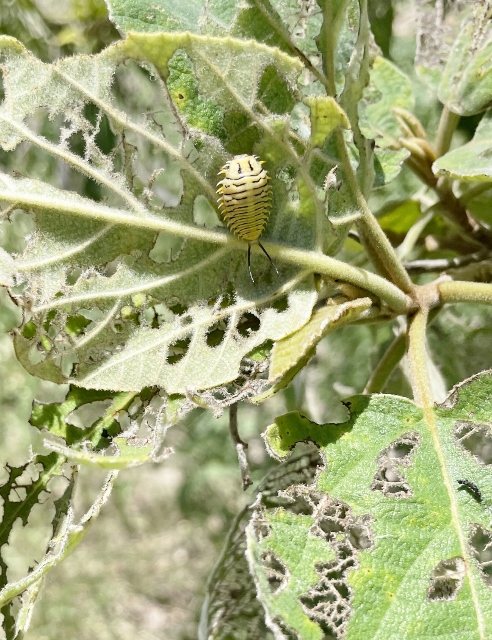
Tortoise beetles range from one quarter to one half inch long. Their oval shaped dome body, like a turtle’s shell, can cover the beetles’ head and legs so they can hide from predators. Adult beetles and their larvae are voracious eaters, quickly populating their host plant’s leaves with holes. The wild olive tortoise beetle can cause unsightly damage to wild olive tree leaves. Instead of pesticides which harm beneficial insects that eat tortoise beetles and their larvae, control can be as simple as removing the critters by hand and destroying — or leave for lizards, frogs and birds.
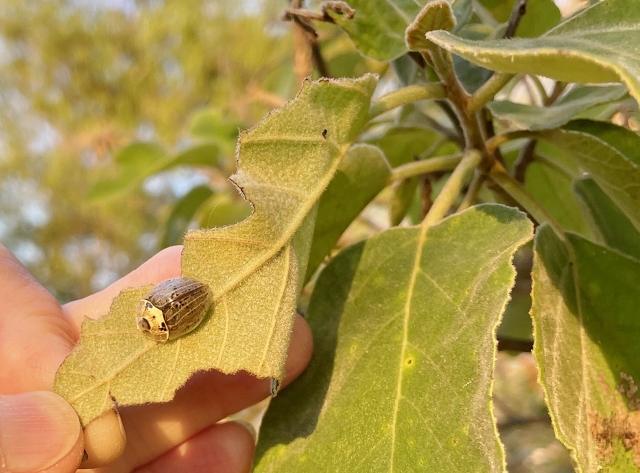
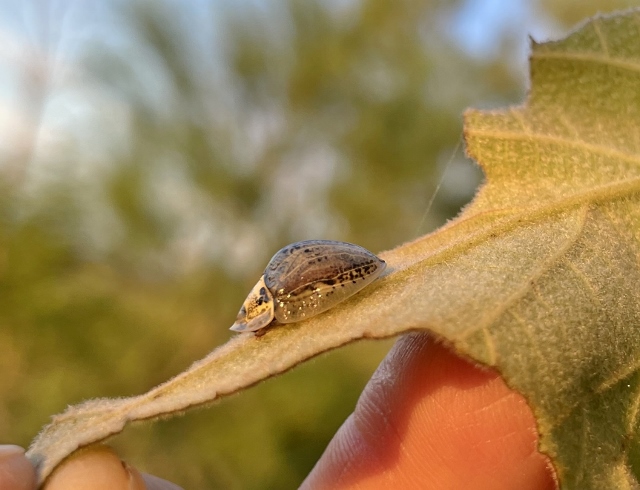
Ground beetles is a catch-all name for the Carabidae family of beetles. They are one of the best bugs in a garden and extremely common. Ground beetles are generally night feeders. The majority are predaceous and opportunistic feeders. Adults hunt primarily on the soil surface; larvae burrow and feed on pests in the soil. Adults eat other insects, ants, maggots, aphids, mites, snails, slugs and caterpillars as well as other beetle larvae and seeds of plants, considered weeds. Ground beetles are mostly shiny black or dark brown and have long, slender legs geared for speed. Some are attracted to lights at night.
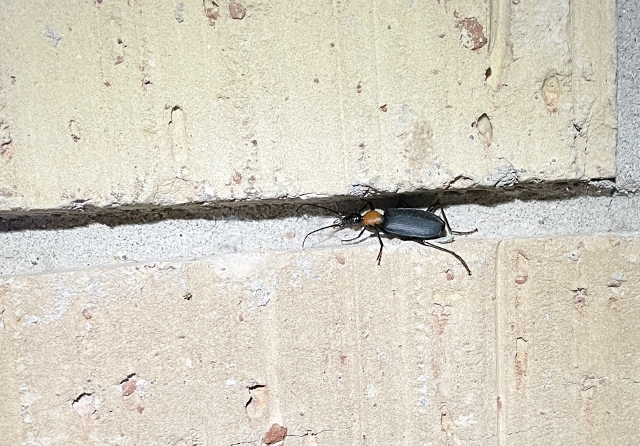
A third group of beetles prevalent in the Valley are water scavenger beetles in the Hydrophilidae family. They have curved legs shaped like paddles to aid in swimming.
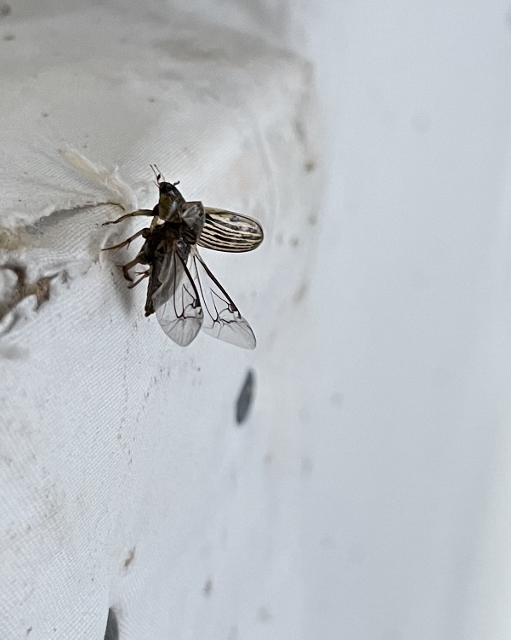
One species, the giant water scavenger beetle, is generally identified by its body shape — to a car buff it might resemble a 1940s Chevy Fleetline Torpedo Lowrider. The largest aquatic-dwelling beetle in the United States, at 1.6 inches long, the giant water scavenger beetle is glossy black, smooth, elongated and narrow, characteristics uncommon to other species. Water scavenger beetles are found in marshy ponds and drainage ditches. They prey on aquatic insects, snails, amphibians, fish, frogs and other predatory insects and reduce mosquito populations in fresh water. Adults also feed on decaying organic matter and detritus. These are beneficial insects and found in most U.S. states, Mexico and Canada. Adults are attracted to lights.
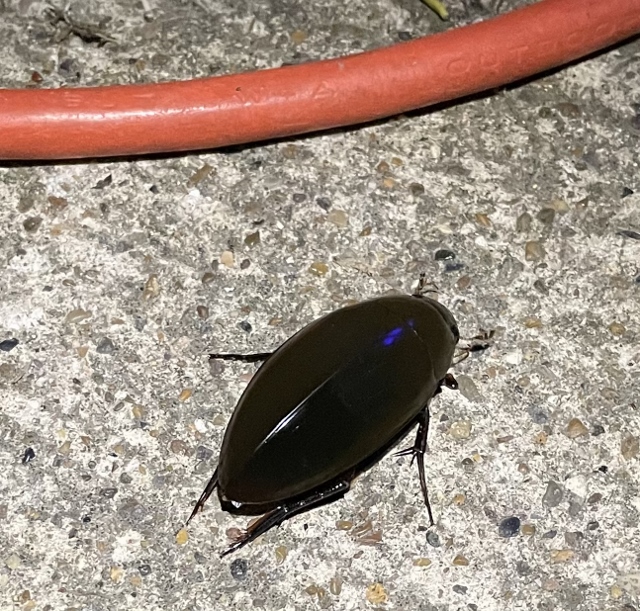
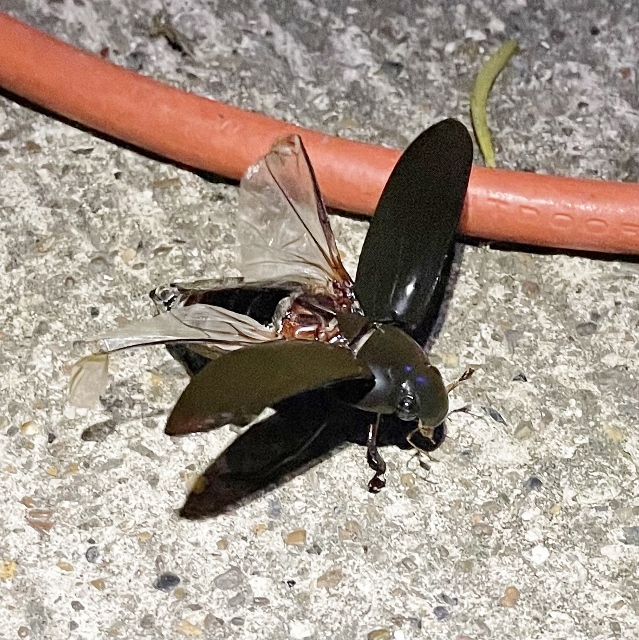
– 30 –